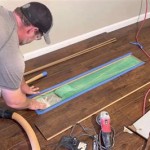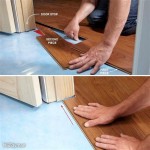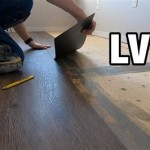How to Tell If Your Vinyl Floor Has Asbestos
Vinyl flooring, a popular choice for its durability and affordability, was commonly manufactured with asbestos from the 1950s to the 1980s. Asbestos, a naturally occurring mineral fiber, was valued for its fire-resistant and insulating properties. However, exposure to asbestos fibers can cause serious health problems, including lung cancer, mesothelioma, and asbestosis. Therefore, identifying whether your vinyl flooring contains asbestos is crucial for ensuring your safety and making informed decisions about its removal or repair.
While there is no foolproof way to determine the presence of asbestos without professional testing, several clues can indicate a higher likelihood of asbestos-containing vinyl flooring. It's important to note that these clues are not definitive, and testing is always recommended for certainty.
Visual Examination
One of the first steps in assessing your vinyl flooring for asbestos is a visual examination. Pay attention to the following characteristics:
- Age: Vinyl flooring installed between 1950 and 1980 has a higher probability of containing asbestos.
- Appearance: Look for a textured or granular surface, as asbestos was often incorporated into the manufacturing process to create a rougher texture.
- Color: Asbestos-containing vinyl flooring is often found in light to medium shades of gray, brown, and beige. However, this is not a conclusive indicator, as many vinyl floors of various colors were manufactured with asbestos.
- Pattern: Some patterns, such as "parquet" or "linoleum" designs, were common styles during the era when asbestos was frequently used in vinyl flooring.
- Backing: If the vinyl flooring has a felt or paper backing, it could contain asbestos. Asbestos was often used in backing materials for its strength and fire resistance.
It's important to note that these visual clues are not always definitive. Some vinyl flooring produced after 1980 might still contain asbestos, while floors installed before this period might not. The best way to confirm asbestos presence is through professional testing.
Checking for Manufacturer Information
If you have documentation about the vinyl flooring, such as installation records or product labels, check for any mentions of asbestos content. While this information might not always be readily available, it can offer valuable insights into the material's composition.
Professional Testing
The most reliable way to determine if your vinyl flooring contains asbestos is through professional testing. Accredited laboratories can analyze samples of the flooring using methods such as polarized light microscopy (PLM) or transmission electron microscopy (TEM) to identify asbestos fibers.
Precautions When Handling Suspected Asbestos Flooring
If you suspect your vinyl flooring contains asbestos, it's crucial to take the following precautions:
- Avoid Disturbance: Do not attempt to remove, cut, or disturb the suspected asbestos flooring yourself. This can release asbestos fibers into the air, leading to potential exposure.
- Ventilation: If you must work near the flooring, ensure proper ventilation to minimize the risk of inhaling asbestos fibers.
- Personal Protective Equipment (PPE): Always wear appropriate PPE, including a respirator, gloves, and protective clothing, when working near suspected asbestos flooring.
- Professional Removal: If you need to remove or renovate asbestos-containing flooring, hire a qualified asbestos abatement contractor who is trained and licensed to handle asbestos safely.
It's essential to remember that asbestos removal should be performed only by qualified professionals. Improper handling can lead to serious health consequences.
Additional Considerations
If you are planning to sell or renovate a property that might contain asbestos-containing vinyl flooring, you should disclose this information to potential buyers or contractors. This ensures transparency and allows them to make informed decisions about the property and any necessary actions related to asbestos.
Furthermore, it's advisable to consult with local building codes and regulations regarding asbestos handling and removal. These regulations may vary depending on your location and can provide valuable guidance on proper procedures and disposal methods.

Asbestos Regulations And What You Need To Know

How To Identify Remove Asbestos In Linoleum Flooring Ferro

Asbestos Floor Tiles What Does In Flooring Look Like

6 Easy Ways To Identify Asbestos In Your Home Without A Specialist

6 Easy Ways To Identify Asbestos In Your Home Without A Specialist

Asbestos In Flooring Mesothelioma

Asbestos Inside Your Home Council Of Victoria

6 Easy Ways To Identify Asbestos In Your Home Without A Specialist

Vinyl Floor Tiles And Covering Asbestos

What Do Asbestos Floor Tiles Look Like Guide With S Sampling Com
Related Posts








